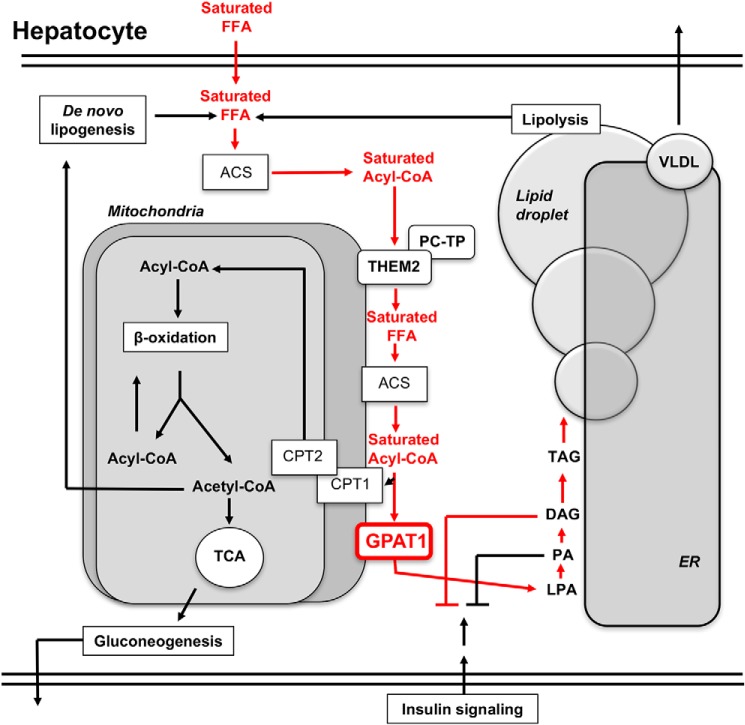Figure 5.
Schematic model for the contribution of Them2 to hepatic insulin resistance due to GPAT1 overexpression. FFA are taken up from the plasma, produced by de novo lipogenesis, or released by lipolysis. These are converted to fatty acyl-CoAs by various ACSs within the hepatocyte. At the mitochondrial membrane, a fraction of acyl-CoA thioesters is hydrolyzed into FFA by the action of Them2. These FFA become substrates for the mitochondria-associated ACSL1, producing newly synthesized fatty acyl-CoAs that are available for fatty acid oxidation within the mitochondria upon CPT1-mediated uptake. Alternatively, acyl-CoAs may enter the glycerolipid synthetic pathways, which is determined by the activity of GPAT1. Following GPAT1 overexpression, as portrayed by red type, Them2 preferentially traffics a fraction of saturated FFA molecules derived from plasma into the glycerolipid synthetic pathway (red arrows), leading to the relative enrichment of DAG containing saturated fatty acids, which promote insulin resistance. Because hepatic steatosis is observed even in the absence of Them2, the majority of the fatty acid flux into the glycerolipid pathway occurs through a distinct metabolic pathway. LPA, lysophosphatidic acid; TCA, tricarboxylic acid; VLDL, very low density lipoprotein.

